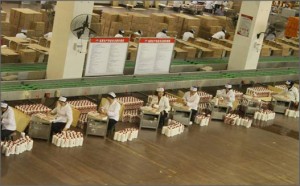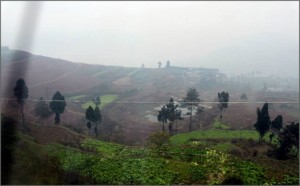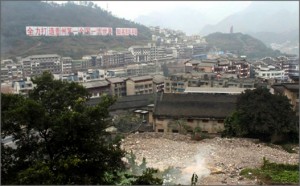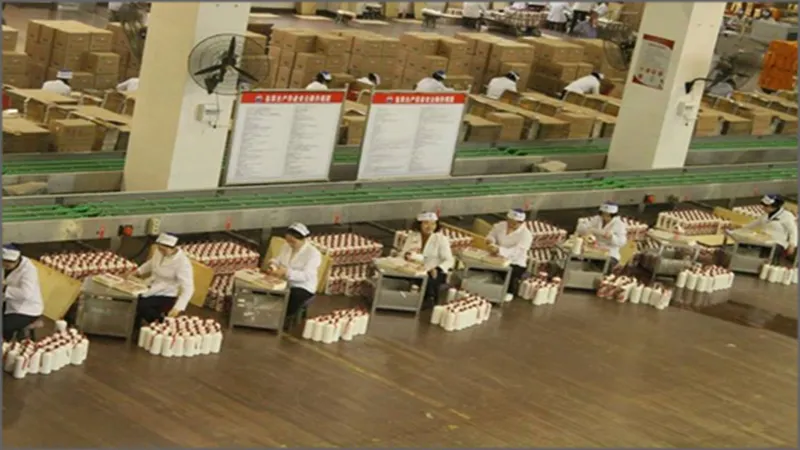In 1978, while unleashing the market oriented economic reforms, Deng Xiaoping stated that it does not matter if a cat is black or white, as long as it catches mice. His statement implied that economic prosperity was the final goal, while the method to obtain the goal was not that important. China’s GDP since the 1980s has sky rocketed, and by the end of 2012, China became the second largest economy in terms of GDP (PPP).
The story of the Maotai town in the Guizhou province in South China is an interesting case study of developmental economics - how a relatively underdeveloped region, even though it is rich in cultural and environmental resources, was turned into a rich town.
In fact, the Guizhou province is an example of increasing disparities between the affluent coastal provinces of the East and the impoverishment in the Western and Southwestern provinces. Guizhou is a relatively underdeveloped region. Its GDP for 2012 was a nominal 680.22 billion Yuan (107.758 billion USD) while its per capita GDP of 19,556 Yuan (3,100 USD) ranks last in the People’s Republic of China.
However, the Maotai town has a different story to tell. Maotai in Renhuai city is one of the 19 cities under the jurisdiction of the Renhuai city. In all, the Renhuai city is subdivided into 19 township level divisions -- comprised of 13 towns and six townships. These towns and townships, in turn, are subdivided into 22 communities and 149 villages. The popular saying about the Maotai city is that the salt of Sichuan province goes through Guizhou through Maotai, which is why all prosperous merchants gather in Maotai. The town has flourished because of the liquor industry, as it is the home of the country’s premium liquor brand Kweichow Moutai. From over 20 billion Yuan (3.26 billion USD), the industry contributes to GDP, base liquor accounts for more than 90 percent of the local financial income. This has in turn boosted the development of the packaging and logistics industries.

In fact, the liquor industry has helped entire families of the city earn livelihood. Wang Hong, a 40-year-old worker in one of the liquor units, said that three generations of his family have been working in the industry. According to him, Maotai was extremely poor and impoverished earlier, but now, thanks to the brand Maotai, his town has become more developed. He said the factory in which he works now was very small, but now it has grown immensely in size as the brand prospers and expands its production bases.
Brand Maotai historian, 63-year-old Hu Jingshi, said that in 1935, during the Long March, the Red Army passed through the town and even took shelter in one of Maotai’s factories, and his grandmother used Maotai alcohol to heal the wounds of the injured from the Red Army. In 1957, Mao Zedong set a target of 10,000 tons of liquor production from Maotai. Currently, the output is 40,000 tons a year.
As Maotai has moved through time in history, it has changed from a mere workshop to a huge brand. In 1951, the brand had only 39 people employed, while currently about 20,000 people are working with the brand.
The brand Maotai has actually changed the development scene of the city. Its contribution to the food and beverage industry of the country is also laudable. Maotai produces 10 percent of the total alchohol produced in the country. According to Zhang Jiebo, the Deputy party chief of Maotai, due to the reputation and influence of Maotai town, the provincial government is now trying to boost the tourism industry. In 2012, 23.5 million Yuan was invested by the provincial government to develop 64 projects. Last year, tourism contributed 44.7 million Yuan.
Maotai alcohol is produced from sorghum plants and water. In all, there are 200,000 mu of sorghum plantations in the town. In Renhuai City, there are 158 villages that have grown sorghum. Being a weather resistant crop, Sorghum cultivation benefits farmers more than many other crops. The chances of crop failure are extremely low. In a worst case scenario, even if harvests fail, Maotai has promised compensation to farmers. However, the field required for sorghum plantation has to be organic in nature. It takes about three years to convert a normal field into an organic one.

According to Tong Hu, a 55-year-old sorghum farmer, his shift to sorghum has helped him immensely. Profits from wheat cultivtion earlier were extremely low. However, due to the shift to sorghum cultivation, he has been able to successfully ensure college education for all three his children. He said that he earned 20,000 Yuan in 2014 from farming.
Maotai has clearly benefited from the liquor industry. However, the slowdown in the world economy has affected it also. Since the world economic crisis in 2008 and the resultant austerity measures adopted by most governments, including China, the sales of liquor too experienced weak trends. Liquor sales dropped substantially. So the production has to be cut down which affected the town’s GDP. It came down from 22.8 billion Yuan (3.7 billion USD) in 2011 to 22.4 billion Yuan (3.6 billion USD) in 2012. Even now, the sales are yet to pick up.
Another issue of concern for the town is that of environmental degradation. Liquor production requires huge quantity of water and for this purpose, water are drawn from the nearby Chishui River. Besides, the distilleries pollute the river too. In a measure to check environmental degradation, efforts are on to plant more and more trees. Also, money, equipment and experts are pumped in to clean the water. Recycling of water is also being emphasised now. The effects of these steps are yet to be visible, but people are quite optimistic.
 (Dr. Sriparna Pathak Raimedhi is an Associate Fellow at Observer Research Foundation, Kolkata)
(Dr. Sriparna Pathak Raimedhi is an Associate Fellow at Observer Research Foundation, Kolkata)
The views expressed above belong to the author(s). ORF research and analyses now available on Telegram! Click here to access our curated content — blogs, longforms and interviews.







 PREV
PREV


